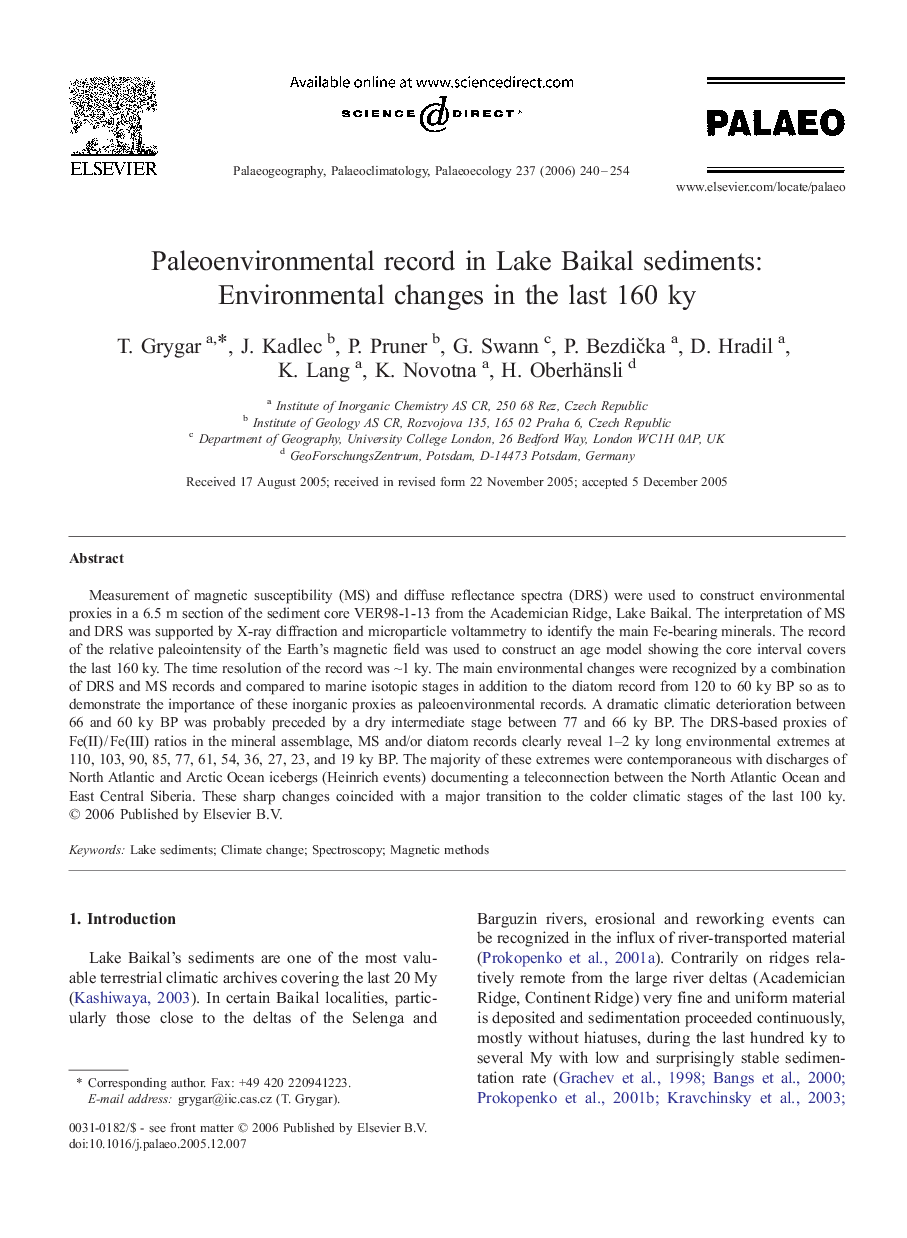| Article ID | Journal | Published Year | Pages | File Type |
|---|---|---|---|---|
| 4469410 | Palaeogeography, Palaeoclimatology, Palaeoecology | 2006 | 15 Pages |
Measurement of magnetic susceptibility (MS) and diffuse reflectance spectra (DRS) were used to construct environmental proxies in a 6.5 m section of the sediment core VER98-1-13 from the Academician Ridge, Lake Baikal. The interpretation of MS and DRS was supported by X-ray diffraction and microparticle voltammetry to identify the main Fe-bearing minerals. The record of the relative paleointensity of the Earth's magnetic field was used to construct an age model showing the core interval covers the last 160 ky. The time resolution of the record was ∼1 ky. The main environmental changes were recognized by a combination of DRS and MS records and compared to marine isotopic stages in addition to the diatom record from 120 to 60 ky BP so as to demonstrate the importance of these inorganic proxies as paleoenvironmental records. A dramatic climatic deterioration between 66 and 60 ky BP was probably preceded by a dry intermediate stage between 77 and 66 ky BP. The DRS-based proxies of Fe(II) / Fe(III) ratios in the mineral assemblage, MS and/or diatom records clearly reveal 1–2 ky long environmental extremes at 110, 103, 90, 85, 77, 61, 54, 36, 27, 23, and 19 ky BP. The majority of these extremes were contemporaneous with discharges of North Atlantic and Arctic Ocean icebergs (Heinrich events) documenting a teleconnection between the North Atlantic Ocean and East Central Siberia. These sharp changes coincided with a major transition to the colder climatic stages of the last 100 ky.
